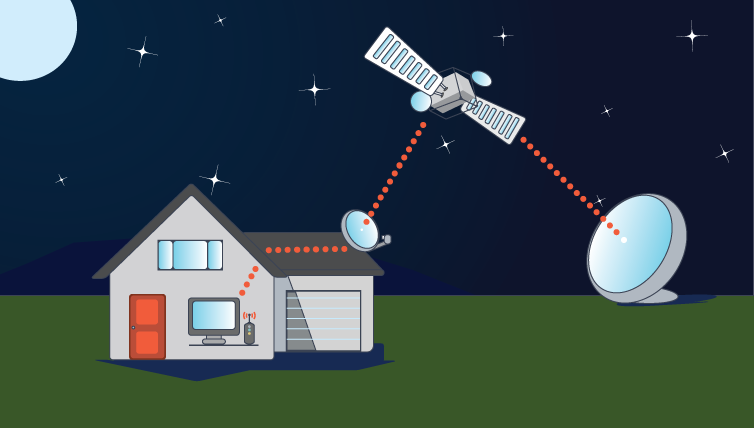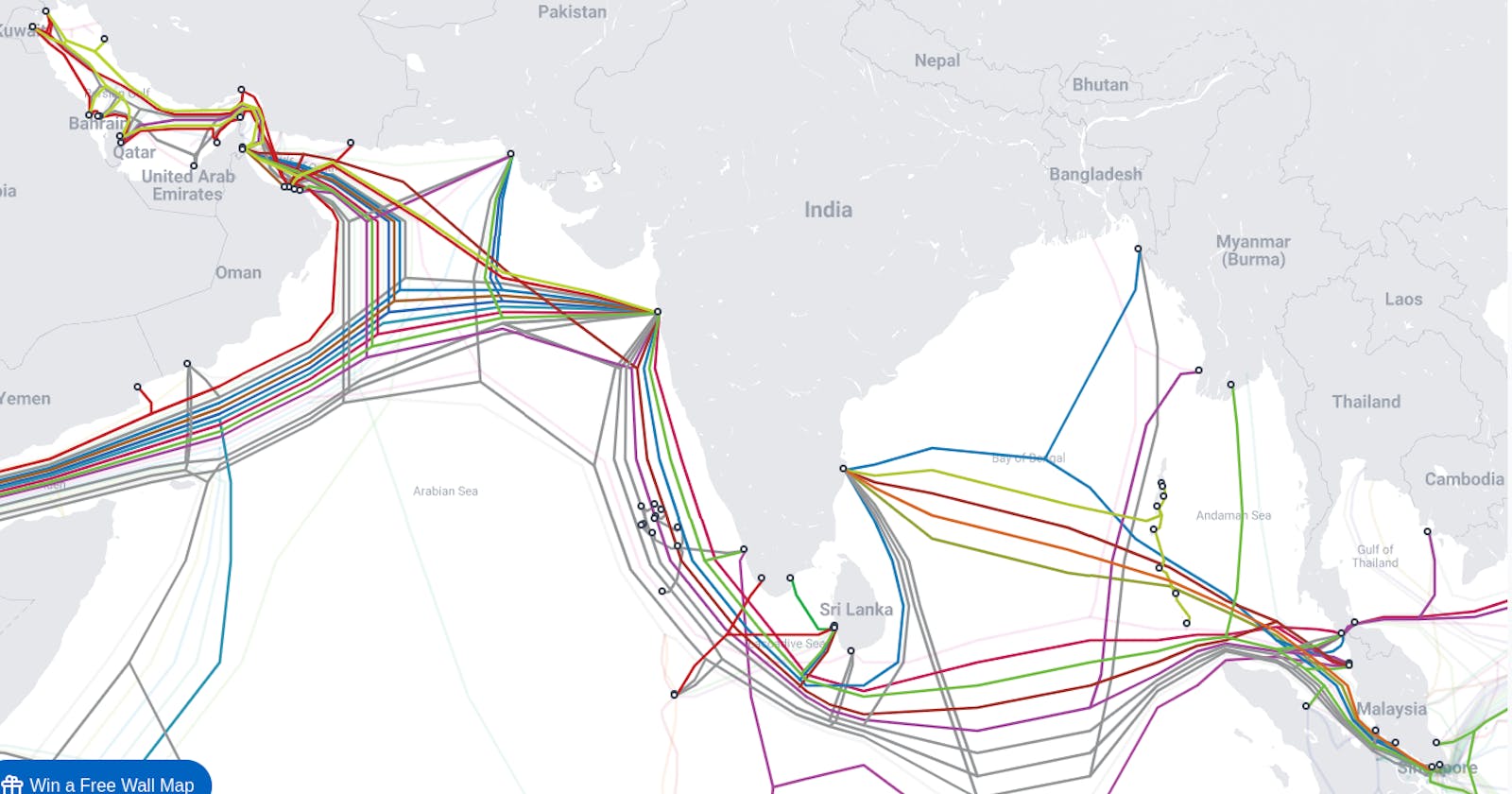Introduction:
Welcome to our blog where we'll unravel the mysteries of the internet and explore how it actually works. Whether you're a DevOps engineer or simply curious about computer networking, this article will provide you with some basic concepts to enhance your knowledge. Special thanks to Subham Londhe from the TWS community for contributing to this topic.
What is the Internet?
The internet is a vast communication network that connects computers located far apart. It allows us to send messages, access information, and share files with people all over the world. But have you ever wondered how this communication happens? Let's dive in!
Types of Communication Networks:
Optical Fiber:
Imagine tiny threads of glass carrying information at the speed of light. That's what optical fiber is! It's a physical medium used to transmit data over long distances. You can see the network of optical fibers around the world on the Submarine Cable Map.
https://www.submarinecablemap.com/country/india
Satellite Signals:
Another way the internet reaches remote places is through satellite signals. Satellites in space send and receive signals to communicate with ground-based devices. However, optical fiber is preferred over satellite signals in most cases.

Interview Question:
Why Internet via optical fiber is preferred more than satellite signals
answer =>
The main reason optical fiber is preferred is because it allows faster communication compared to satellite signals. The distance between users and satellites is much greater, causing a delay in communication. With optical fiber, the distance is shorter, enabling faster data transmission.
The Internet Hierarchy: To ensure connectivity and efficient data transfer, the internet is structured in a hierarchical manner. Let's take a look:
Tier 1 Companies:
These are the big players that lay the foundation of the internet. Tier 1 companies distribute optical fiber connections all over the world, creating the backbone of the internet.
Tier 2 Companies:
Tier 2 companies utilize the services provided by tier 1 companies. They either purchase or rent the optical fiber connections to extend their network reach.
Tier 3 Companies (ISPs):
Tier 3 companies, such as Idea and Vodafone, are Internet Service Providers (ISPs) that operate on a smaller scale, providing network services in specific cities. They often rely on tier 2 companies for access to the wider network.
Local Area Network (LAN), Metropolitan Area Network (MAN), and Wide Area Network (WAN):
When you connect to the internet through your mobile phone or computer, you're using a Local Area Network (LAN). It's a small-scale network that connects devices within a limited area like your home or office.
Metropolitan Area Networks (MANs) cover a larger area, typically a city. ISPs operating at this level buy data services from larger companies, known as Wide Area Networks (WANs), to provide connectivity to their customers.
Conclusion:
Understanding how the internet works at a basic level helps us appreciate the marvel of connectivity it provides. Optical fiber and satellite signals enable long-distance communication, with optical fiber being the preferred choice due to its speed. The hierarchical structure of tiered companies ensures seamless connectivity across the globe. Next time you send a message or browse the web, remember the complex network behind the scenes that brings it all together.
